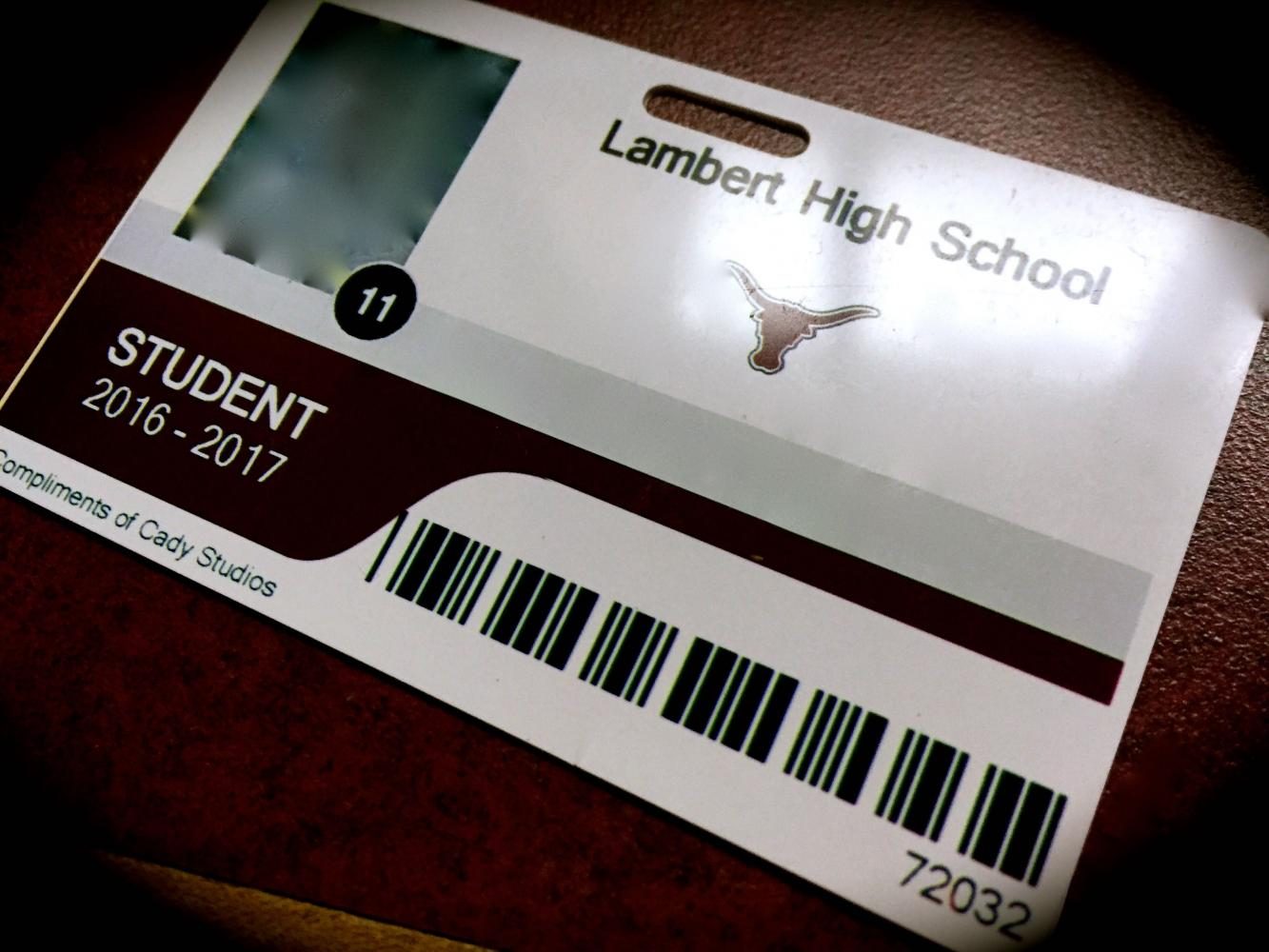The unknown potential of the student ID
The student ID could potentially be symptomatic of standardization. Students are at risk of demoralization.
In the average school day, students obviously won’t spend much of their time thinking about their student ID. It is only a set of six meaningless digits that remain burned in the back of a student’s mind for twelve years. It’s how the school system recognizes an individual amongst thousands of other students. It’s how we do homework. It’s how we buy lunch. However, the student ID could subconsciously be harming the self concept and motivation of Lambert’s students, standardizing their minds, and stripping us of humanity and creativity.
To understand the potential harm of the student ID, one must primarily understand the mysterious workings of subconscious association. The subconscious mind, a layer of thought humans are cognitively unable to tap into, contains our deepest desires, strangest insecurities, unknown beliefs, and true emotions. The subconscious mind holds all of our memories, and unknowingly permits us to have the potential to associate events based on certain similarities. The student ID we use today may unintentionally be symbolic of negativity. When visualizing the sequence of randomized numbers that carry no other personal meaning, students are subject to the possibility of an unwanted association in their subconscious minds leaving them to unknowingly wonder if they are standardized prisoners, being stripped of the differences that give us our humanity. The student continually has the potential to subconsciously associate the lack of uniqueness and individuality present in the numbers with their self concept.
Mrs. Parker, Lambert’s own AP Psychology teacher, affirms that this type of correlation is possible. In an interview, she described the renowned Stanford Prison Experiment, in which a group of college students were assigned roles of prisoner or prison guard based on a coin flip. The experiment simulated conditions of an actual prison, revealing how people tend to conform to assigned roles and given identities. “The prisoners actually within just a few days started to identify by the number they were given rather than by their name. They still found individuality with the number, but also conformity as well. Very interesting study,” she stated. Mrs. Parker continually described how she theorizes that this association can be positive or negative. “I think it’s based on the perception of the student. I know in sports, jersey numbers often mean a lot to the athlete. It’s a way that they are distinguished. Athletes are really either superstitious or they love a certain number and they come to identify with that number. So for one it could be like people embrace it, on another level it could be meaningless.” she reflected.
However, this could be an underestimation of the probability that students could have a more negative outlook given their age. According to the National Institute of Mental Health, anxiety disorders and depression are on the rise for teens. Statistics from the organization show that in 2015, an estimated 3 million adolescents aged 12 to 17 in the United States had at least one major depressive episode in the past year. It is possible that the tiniest nudge of negativity and constraint could result in the student ID becoming symptomatic of standardization, leading to a lack of motivation for learning and a damaged self image.
Some may argue that standardization is not an immediate threat; however, this issue has already ignited a fire wiping out creativity in schools in the United States. Standardization exists in effort to measure intelligence. Children in schools are extrinsically motivated to match a set standard, and are punished by grades for failing to match this standard. This standardization results in the creation of one belief, one universal idea, that combats diversity and ingenuity. Think of it this way: there are a billion problems in the world at the moment that don’t have a solution. Cancer, world hunger, and poverty are all examples of why the world demands fresh, innovative minds to create brilliant solutions. If everyone thinks the same way, there is looming doom in the future as society will be unable to match the growing demand for innovation.
Not only does this affect society as a whole, but the elimination of creativity specifically targets individual success. Schools are supposed to act as a place where students can craft a unique identity for themselves, which can further aid students as they make decisions for their future involving colleges and careers. Lambert, on its website, claims it’s vision is to craft students “capable of competition at the highest levels”. The numerical School ID could potentially act as an inhibitor to this fundamental purpose. Competition is born from diverse thinking and tolerance of new ideas. Individualization is key to societal progress.
Granted the bigger picture may be a bit far stretched, yet there is no denying that standardization could be associated with the student ID ultimately resulting in a negative impact. It’s time society acknowledges this issue and begins to make changes to accept creative thinking and individuality. While a negative cognitive outlook is inevitable for all teens, we must do our best to promote a positive outlook. As a society we must respect and tolerate our differences and celebrate the traits and ideas that make us unique. For the student ID, schools could take time in elementary schools to start activities where children define the student ID based on their dreams for the future, starting a fundamental positive association prior to exposure to stress and life’s many ups and downs. Consider the athletes aforementioned by Mrs. Parker. If that sort of enthusiasm is promoted with the ID, schools could be motivating students to learn and engage in a beneficial manner within their community.
Furthermore, the students of Lambert are capable of inspiring change all over the world by introducing new ways to combat standardization at the source. The promotion of individualization and the expression of concern for each and every student as depicted through little actions could make a huge difference to someone who feels meaningless. For example, on Valentine’s Day last year, when every student’s name was placed on a paper heart in some random corner of the school, I observed students felt happy because they felt that their community and peers took the time to recognize who they are as individuals amidst thousands of others. Things like this provide students with motivation to continue to be creative and unique and love themselves and others in a manner that promotes diversity. The school ID may be just a symbol without a meaning, but what does that mean for you?
Your donation will help support The Lambert Post, Lambert High Schools student-run newspaper! Your contribution will allow us to purchase equipment and cover website hosting costs.









Jennifer Zhao • Sep 22, 2017 at 10:49 am
This is an interesting outlook. I’ve seen a lot of articles on how standardization could affect students, but those mostly focused on things like school grades and their association with beef quality grades, never about student IDs.